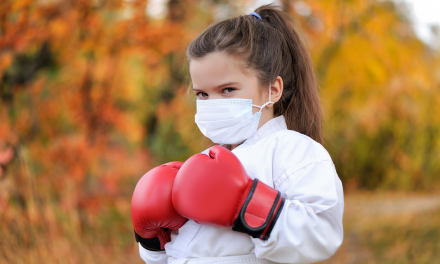By Tempest Wright
Black, Latinx, and Native American children make up less of the United States population, respectively, but more are dying of coronavirus than white children. Scientists agree that people of different races actually have most of the same genetic makeup. Therefore, the reason more children of color are contracting COVID-19 isn’t because of the biology of their race, but due to racism itself. The Centers for Disease Control and Prevention (CDC) reports that crowded living conditions, food and housing insecurity, and lack of access to adequate health care play a role in people of color contracting and dying from COVID-19.
Are Children Really at Risk?
COVID-19 infection in children is downplayed due to reports that children experience milder symptoms than adults. However, for some demographics, this is not the case. Among the 121 reported coronavirus deaths in children as of July 31, 2020, Black, Latinx, and Native American children accounted for 78% of those that died of the virus. Children of color often live in multigenerational households, with parents and other family members who are essential workers and cannot work from home. Thus, they are at higher risk of coming into contact with and contracting the virus through secondary transmission.
Conversely, unemployment is a driver of poverty that keeps children underfed, impacting their immune systems, and away from necessary healthcare services. A study from the Journal of the American Medical Association (JAMA) reported that 1 in 10 Americans don’t have access to enough food, including 20% of African Americans and 14% of Latinx Americans. Outside of Black and Latinx communities, Native American reservations are often without electricity, running water, or health care. And like other minority communities, they lack access to fresh, healthy foods. Native reservations are also less likely to receive relief from the United States government and are largely ignored, despite being the original people of this land.
These health care disparities put minority children at greater risk of illness and death than their white counterparts. Lack of insurance, childcare, reliable transportation, and paid sick leave are all factors that threaten the health and livelihood of minority children. Children of color are also at greater risk of health complications as a result of COVID-19, including multisymptom inflammatory syndrome (MIS-C) and respiratory failure. Additionally, due to the pandemic, necessary preventive care such as vaccines and routine checkups for children have been delayed, according to the CDC. Due to their greater likelihood of living in polluted areas and other social determinants of health, minority children also suffer from more comorbidities of COVID-19, such as asthma, genetically inherited disorders, and congenital heart disease.
What Children of Color Lack
The absence of health equity is killing children. While children of color collectively make up half of the U.S. population under age 18, they receive less health care and education and are more likely to be food insecure. Long-standing discrimination continues to negatively impact the health of people of color across the nation. Additionally, the stress that adults of color endure due to racism and discrimination is also felt by their children and even their unborn fetuses. Stress has a pronounced effect on the immune system and makes it harder to fight off infections and disease such as COVID-19.
Health disparity and inequity has always existed in minority communities, but the current pandemic is shining a spotlight on just how damaging the lack of resources due to race are. Despite this, public health messaging continues to place the responsibility of improving their health solely on people of color, without offering them tangible support or resources. The U.S. Surgeon General, who is a Black man, told Black and Latinx citizens to simply stop smoking, stop drinking, and lose weight. However, in his speech, the General did not address the environmental reasons people of color are more likely to smoke, drink, or be overweight or the health inequities that people of color face. This type of patronizing and individual blame is not placed on white people.
What Must Be Done
Efficacious policy change – that centers racial equity – will make children of color healthier. Housing discrimination, environmental racism, and the wealth gap are all systemic contributions to the failing health of Black, Latinx, and Native American people. Congressional attacks on the Affordable Care Act (ACA) also prevent disadvantaged people from life-saving health care, and we now see that children are paying the price.
As the fight against the coronavirus rages on, it’s important that children aren’t left to the wayside just because their symptoms appear milder or their rates of infection are lower. With the reopening of in-person schooling and other childcare services, infection in individuals under age 18 is expected to rise. With this reality, COVID-19 infection in children is just as serious as it is in adults and senior citizens. Additionally, with minority children living in multigenerational households, there is the increased risk of spreading the infection to their older relatives. COVID-19 is a threat to us all, but with the right attention and action, the threat can be mitigated and eventually vanquished.








